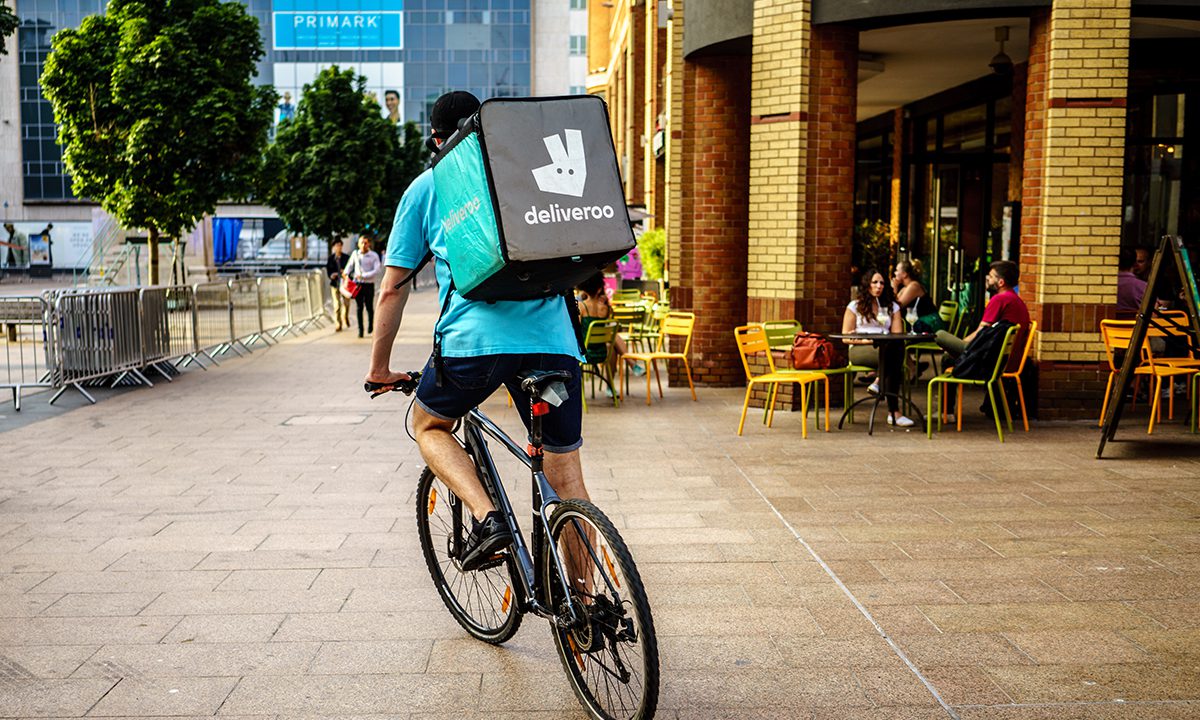UK’s Deliveroo Catches ‘Aggregator Flu’ as Consumers Rein In Spending

UK-based food delivery service Deliveroo announced Monday (July 18) that it is slashing its sales growth forecast in the face of a “rapidly changing macroeconomic environment.”
In lowering its projected gross transaction value (GTV) growth rate to 4-12% from 15-25%, the company is acknowledging a slowdown in consumer purchases amid growing inflationary fears.
“Management is confident in the company’s ability to adapt financially to a rapidly changing macroeconomic environment through gross margin improvements, more efficient marketing expenditure and tight cost control,” Deliveroo stated in the trading update.
The cautious shift comes as around the world, aggregators struggle against a range of economic headwinds that threaten their growth. As food prices continue to skyrocket, many consumers are seeking ways to be more conservative in their food spending, opting for lower-price options.
Indeed, an unwillingness to pay the fees associated with the channel is the most common reason consumers choose not to use aggregators, according to data from PYMNTS’ 2022 Restaurant Friction Index, created in collaboration with Paytronix, which drew from a survey of more than 2,100 U.S. consumers.
See also: Loyalty Programs Best Way to Get Diners to Spend More
In response to rising prices, the shift away from restaurant spending toward grocery is already underway, as General Mills CEO Jeff Harmening observed on a call with analysts in late June discussing the company’s fourth-quarter fiscal year 2022 earnings.
“When we saw this in the last recession, the Great Recession, we saw that consumption of away-from-home eating was down and replaced by at-home eating,” he said. “We’re seeing the same kind of behavior starting now … and that’s because customers want to get out more, but the cost of eating away from home is more than double the cost of eating at home.”
Read more: Inflation Shifts Consumer Spending to Grocery, not Restaurants, Says General Mills
Additionally, while aggregators have been facing a difficult market for gig driver labor for some time now, these challenges have been compounded in recent months by sky-high gas prices, making the economics of each order more challenging for drivers.
See also: Aggregators Tackle Gas Challenges
Deliveroo is far from the only aggregator coming up against these challenges. After months of Grubhub’s parent company Just Eat Takeaway.com searching for a buyer or strategic partner for the Chicago-based aggregator, the company announced earlier this month that it had struck a deal with Amazon. Through the deal, Amazon could earn a 2% to 15% stake in the food delivery firm.
Related news: Grubhub Deal Gives Amazon New Ammo in Walmart Food Fight
Still, if the United States’ population is any indication, many consumers order from restaurant aggregators regularly, with some doing so daily. The July edition of PYMNTS’ ConnectedEconomy™ series, “The ConnectedEconomy™ Monthly Report: The Rise Of The Smart Home,” which draws from a May survey of a census-balanced panel of more than 2,600 U.S. consumers, finds that 43% of consumers had ordered food for same-day delivery from a restaurant aggregator in the previous month. Additionally, about one in five consumers report doing so weekly and 7% report doing so daily.
Get the study: The ConnectedEconomy™ Monthly Report: The Rise Of The Smart Home
For all PYMNTS EMEA coverage, subscribe to the daily EMEA Newsletter.